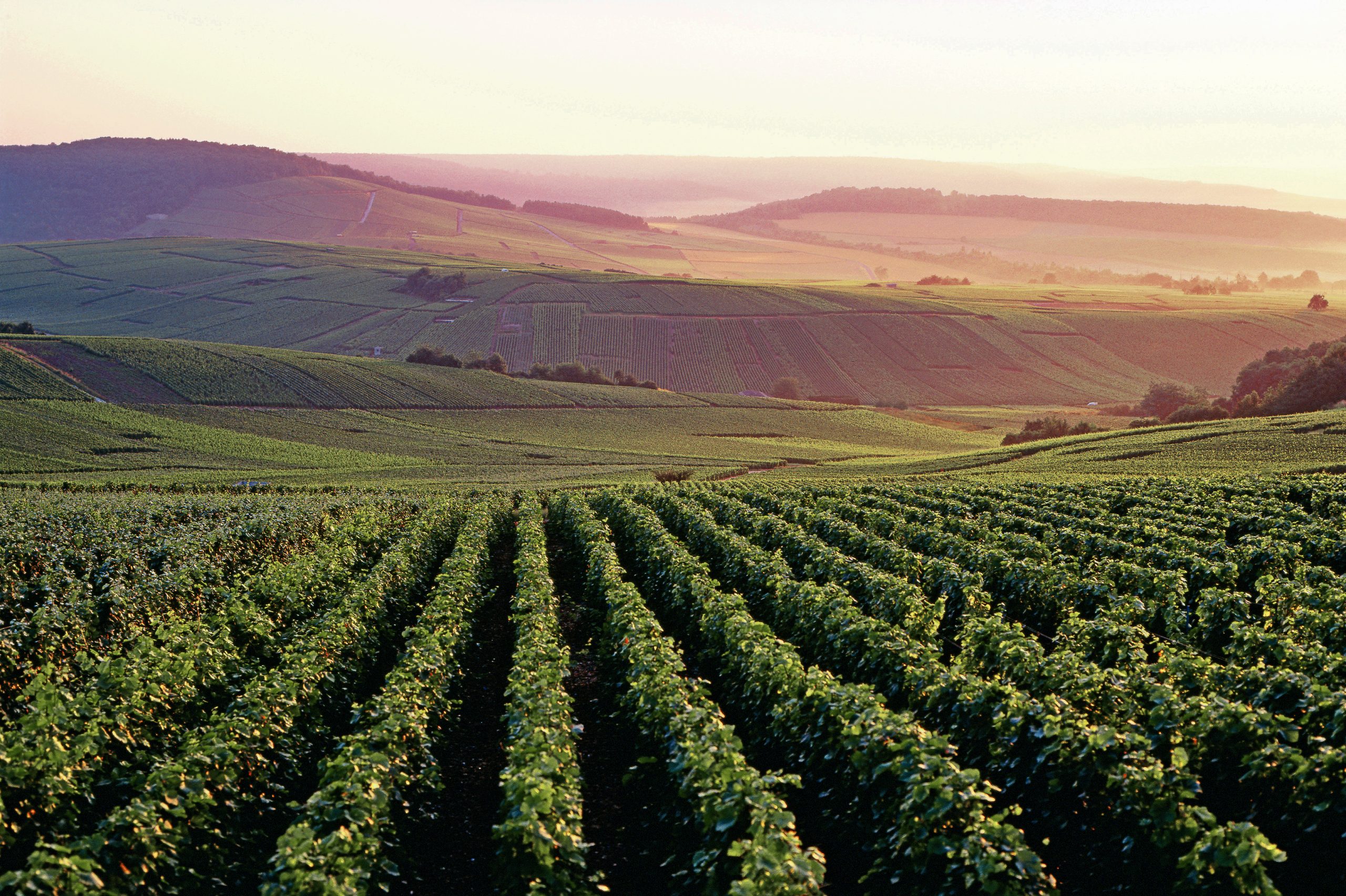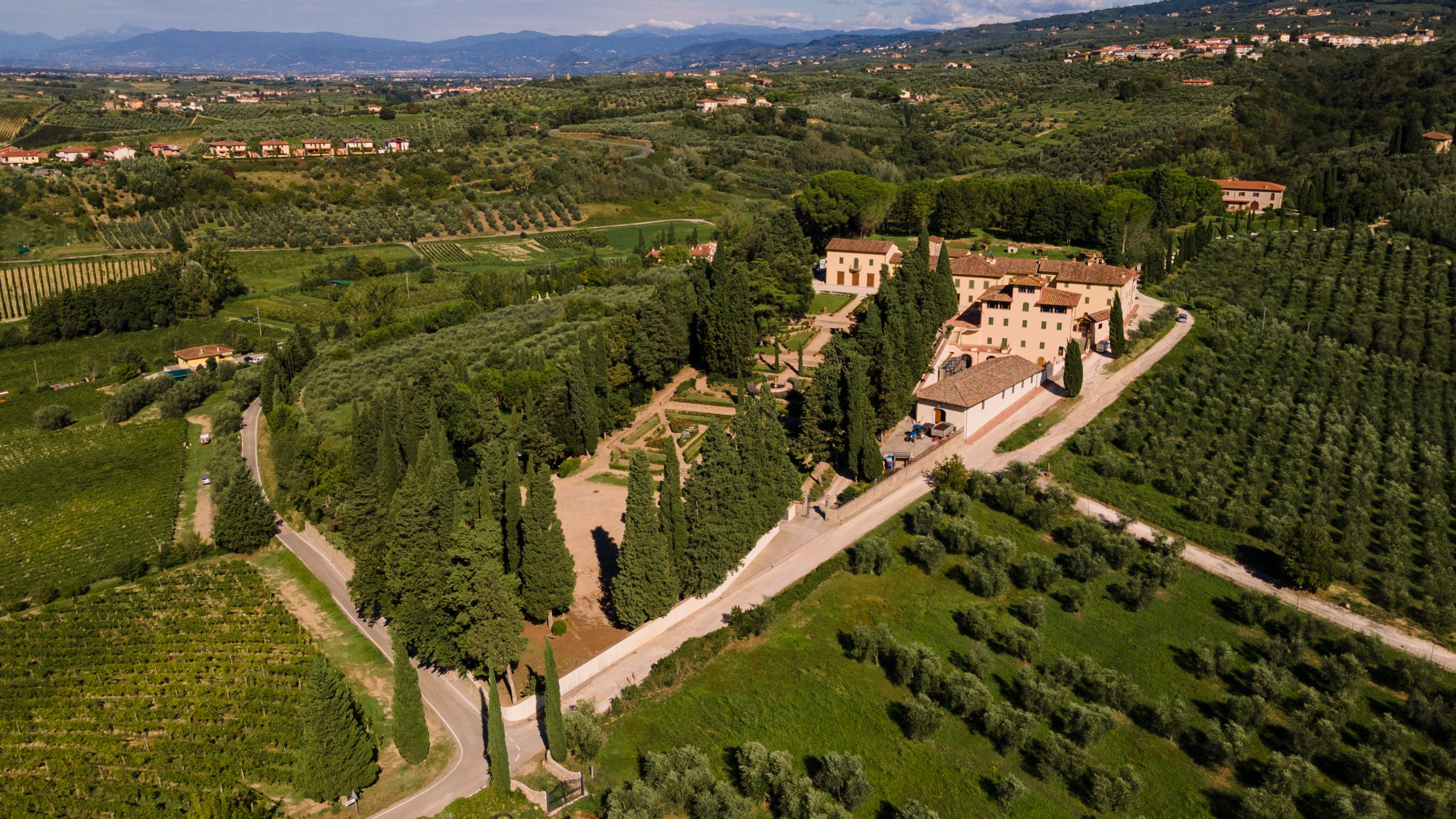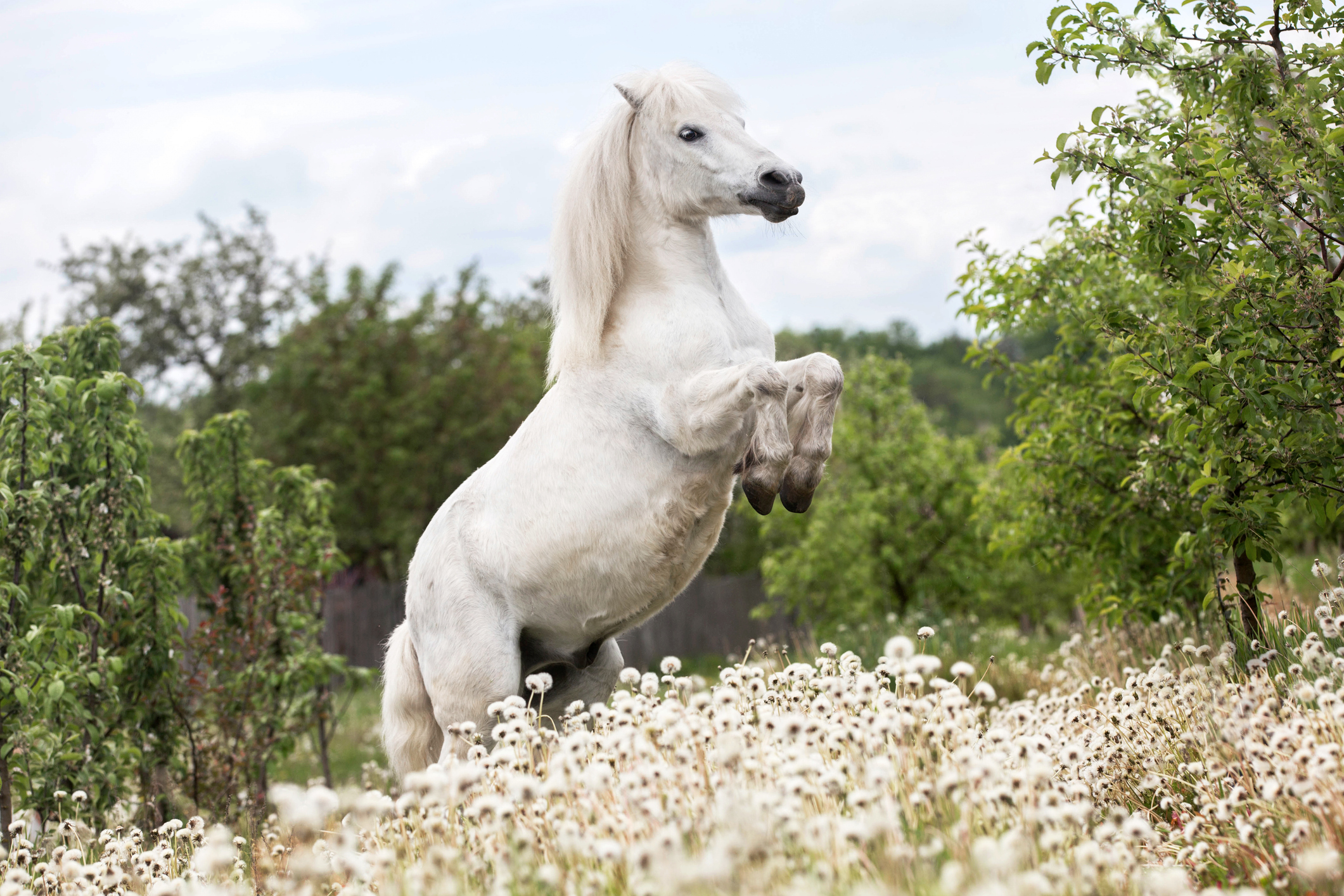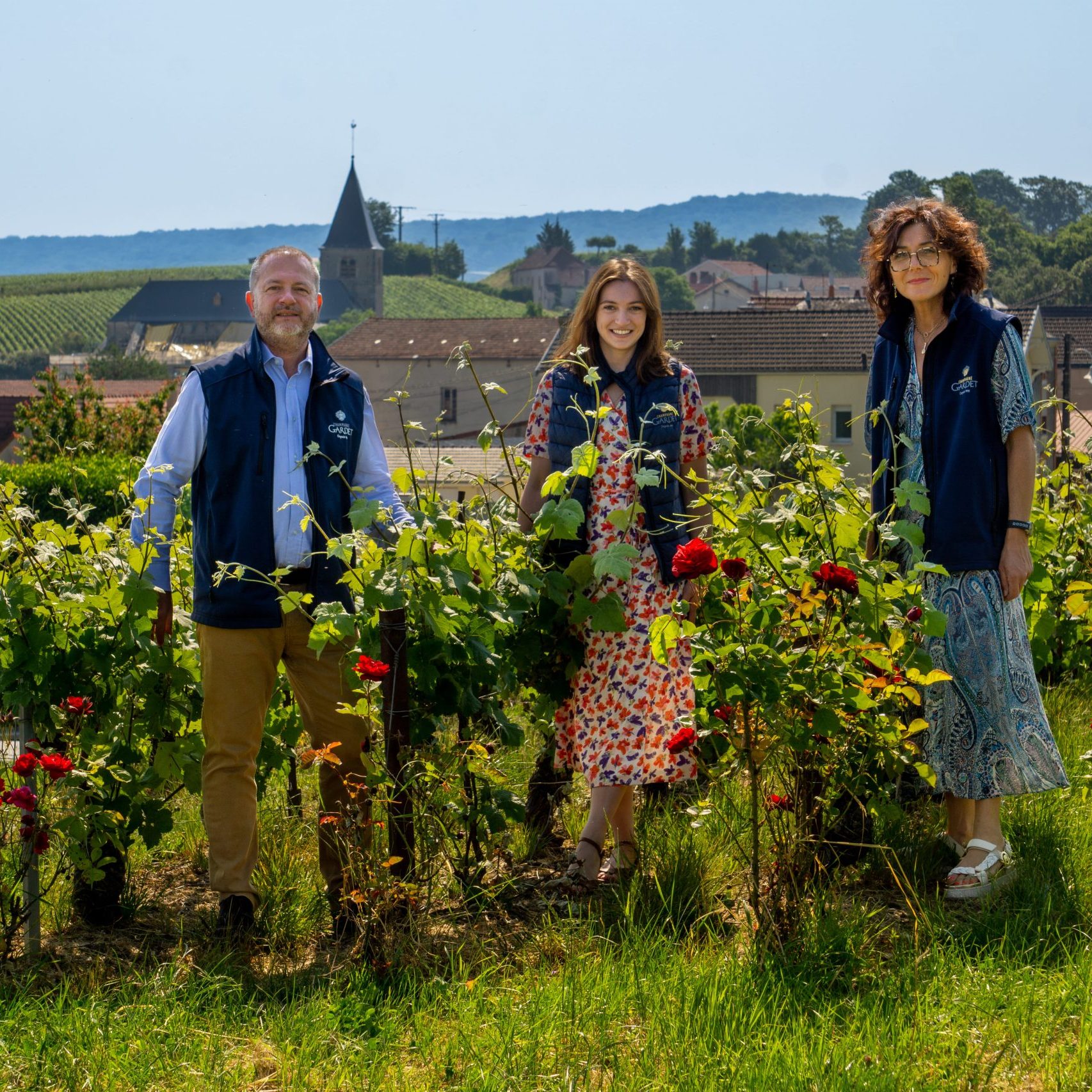Can Saint-Emilion stop the rot?
From changing blends to using cutting edge science, Grands Crus Classés de Saint-Emilion producers are experimenting with a number of ways to mitigate climatic hazards in their vineyards.
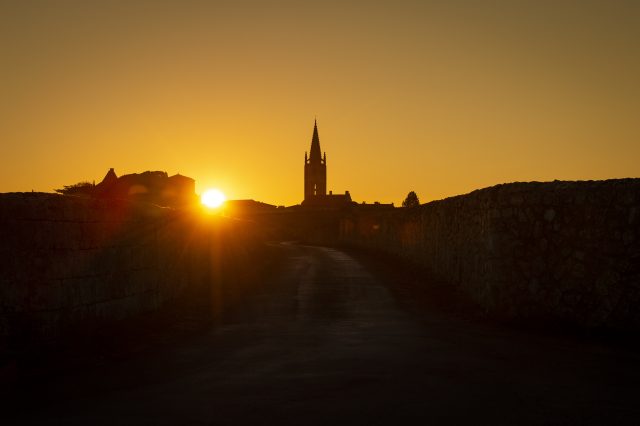
“In Bordeaux it is difficult to deal with mildew because we have an oceanic climate, and therefore more humidity,” Marie Loustalan Prévost of Château Grand Corbin-Despagne told the drinks business at this week’s London tasting of Grands Crus Classés de Saint-Emilion.
The issue of fungal diseases such as downy mildew, powdery mildew and grey rot damaging the grapes has been such a cause for concern in the region that last year a helpline was setup for “traumatised” vignerons.
Although Saint-Émilion is relatively far inland compared to other Bordeaux AOCs, situated on the right bank north of Entre-deux-Mers, it has not been immune to the problems that humidity brings. The 2023 vintage saw significant mildew pressure, similar, for some producers, to that of 2021.
Merlot, which makes up the vast majority of the grapes planted in Saint-Émilion, is especially prone to fungal infection because the variety’s thin skin is more easily punctured by fungi, resulting in rotten fruit.
Fighting fungus
The obvious but unfashionable solution to these problems would be spraying fungicides in the vineyard.
Château Badette owner Arnaud Vandenbogaerde described the estate as “80% organic”, and explained that fungicides are used “when really necessary”, such as during the 2021 growing season. “Financially, I cannot tolerate losing a vintage,” he said.
For organic certified producers, synthetic fungicides simply aren’t an option at all.
The traditional anti-fungal remedy, and one that is permitted for organic producers, is the use of a copper-based spray.
While effective, this technique, when used over several vintages, results in the accumulation of copper, which is toxic to plants in large doses, in the soil.
One method of getting rid of excess copper from the soil that Badette is keeping an eye on (though is yet to deploy itself) is the idea of planting a particular flower, the Asiatic Dayflower, which rapidly absorbs copper ions from the soil. The flower can then be uprooted and disposed of, thus removing the copper from the ground.
While PIWI grapes, varieties that have been developed due to their resistance to fungal disease, are increasingly talked about as the solution to mildew problems for producers across the globe (ProWein 2024 will be featuring a showcase of them), Vandenbogaerde noted that it will be a long time before they are permitted for Grands Crus Classés de Saint-Emilion producers: “It will take decades of evolution of these grapes to achieve the quality needed – PIWI grapes are a solution for £3 supermarket wines, but not for the wines in this room.”
It might not be a case of adding new sprays or grapes to the vineyard to deal with mildew, but instead managing what you already have differently.
Grand Corbin-Despagne was converted to organic viticulture in 2004, and Loustalan Prévost shared that one method it uses to reduce the risk of rot is to manage the vine’s canopy to keep the leaves away from the bunches, thus lowering the humidity around the grapes.
According to Hakima Dib at Château Fonplégade, which was certified as organic in 2013 and is also biodynamic, adherence to these practices “already involves looking after the vineyards”, and she argued that by being constantly in the vineyard, “observing” the vines, helps to keep fungal threats at bay.
Then again, Marie Laure Latorre, from organic producer Château Jean Faure, pointed out that it is “very hard” to find enough vineyard workers to properly manage and maintain an organic vineyard: “When you’re organic, you have to do more yourself”. She revealed that many producers are reliant on itinerant migrant labour during the growing season, especially from Romania.
By some accounts, climate change has, by and large, actually made mould a less prominent threat than it once was.
Partner Content
“You can’t compare Bordeaux to the Languedoc or Rhône where the Mistral dries everything it,” Vandenbogaerde shared. “But we have a lot more hot vintages now, which is a solution to the mildew.”
Others have had a different experience. When asked if she saw the benefits of climate change in preventing mildew, Laure Latorre said: “Not necessarily – summers are often dryer, but it’s wet during the spring.”
Hot topic
However, whether or not climate change is making mould less of a hazard, it is a case of hopping out of the frying pan and into the fire. As Vandenbogaerde put it: “It is not a solution if it creates another problem.”
Hot summers, and the hazards that go with them, including fires and drought, have gone from being an exception in Bordeaux to becoming the norm.
Laure Latorre suggested that organic producers have an edge when it comes to the resilience of the vines to water shortages in particular: “The roots tend to be deeper, so the vine has an easier time finding water.”
For many producers, the solution to this growing problem of excess heat doesn’t lie in how their vines grow, but rather in what they choose to grow.
Romane Blaise of Château De Pressac shared that it cultivates six grapes varieties on its 40 hectares of vineyards, something quite unusual for Saint-Emilion: Merlot, Cabernet Franc, Cabernet Sauvignon, Petit Verdot, Carmènere and Malbec. The latter two might be best known today for being grown in South America, but their ancestral home is in this corner of France.
At present, Château De Pressac only uses 1-2% of Carmènere and Malbec to add a “spicy note” its blend, with Merlot making up about 75-80%, but Blaise shared that rising temperatures have made her grateful for the planting of these varieties: “10 years ago it was not easy to cultivate Carmènere and Malbec [due to ripening issues], but now we are really happy to have these grapes because of climate change.”
While generally Merlot struggles with high temperatures and is prone to over-ripening due to its relatively thin skin, thicker-skinned grapes such as Cabernet Franc, Cabernet Sauvignon, Petit Verdot, Carmènere and Malbec fare somewhat better.
Blaise did suggest that Château De Pressac would have to “maintain” the Merlot-forward natures of its wines in order to maintain its identity.
But not every producer is opposed to downplaying the role of Merlot in its blends. Château Dassault’s general manager Romain Depons shared that while its present blend is around 75% Merlot, 20% Cabernet Franc and 5% Cabernet Sauvignon, the “aim” is for the proportions to shift to around 60% Merlot, 30-35% Cabernet Franc and 5-10% Cabernet Sauvignon.
Depons’ preference for Cabernet Franc is due to is ability to “achieve good ripeness without too much sugar”.
Fittingly, given that Château Dassault is owned by the owners of fighter jet manufacturer Dassault Aviation, a great deal has been invested into research and development. One experiment being trialled examines how increased leaf cover over the bunches might better shade the grapes from the summer heat, while still allowing them to ripen.
Also fighting in Cabernet Franc’s corner is Château La Tour Figeac. Director Pierre Blois praised the “good maturation” of the variety when faced with high heat, and its “low sensitivity to humidity”. He also described it as “more elegant” than its more famous offspring, Cabernet Sauvignon. La Tour Figeac’s 2018 was 75% Merlot and 25% Cabernet Franc, its 2020 60% Merlot and 40% Cabernet Franc, and Blois shared that the aim was to uproot enough Merlot, replacing it with Cabernet Franc, to achieve a 50/50 split.
Blois also foresees a time when Grands Crus Classés de Saint-Emilion producers will “have to think about other varieties” that cope well with high temperatures, citing Syrah and Tempranillo in particular. However, he noted that, after uprooting vines and “letting the ground rest for three years”, planting the new vines, allowing them to grow, and the quality of the fruit to develop, “the climate can have changed a lot – the decisions we make today have to be for the future.”
The decline of Merlot is not just being seen in Bordeaux – producers across the wine world are turning their backs on it due to climate change. But it might not all be doom and gloom for this much-maligned variety.
Related news
Volatile first quarter for fine wine, but there is optimism on the horizon
And they're off! Bordeaux en primeur campaign starts
Achaval Ferrer launches fourth wine in its iconic Finca range

